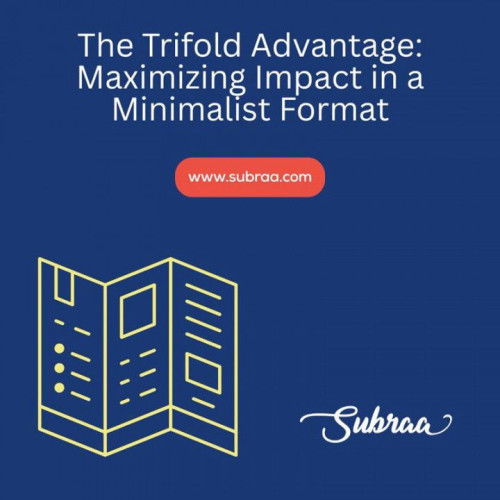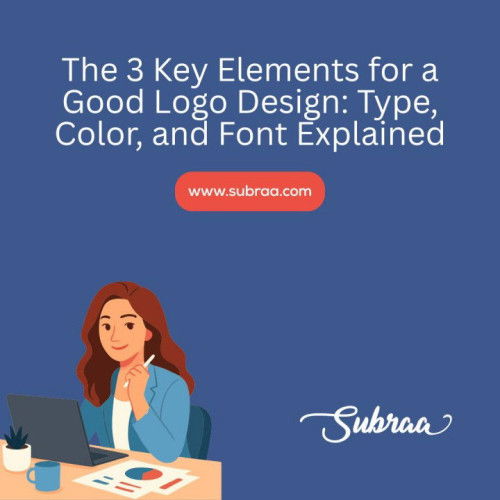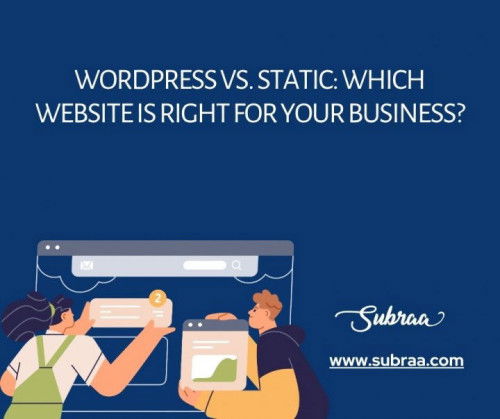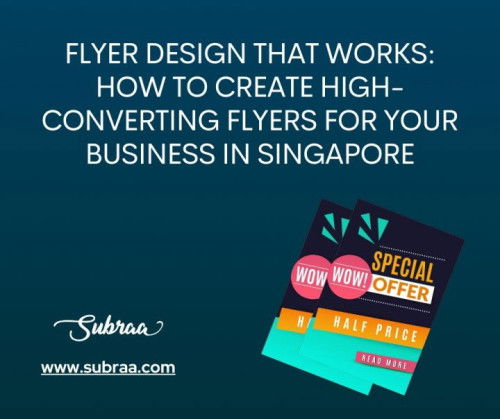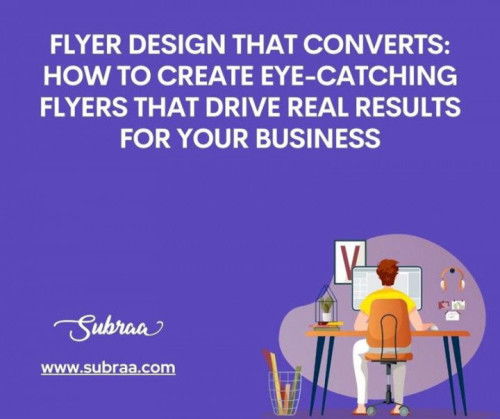Flyer Design That Works: How to Create High-Converting Flyers for Your Business in Singapore — Subra
In the digital marketing age, you might think physical marketing tools like flyers are obsolete. But that couldn’t be further from the truth. When designed correctly, a flyer is a compact, high-impact marketing tool that grabs attention, delivers your message clearly, and drives real results — especially for local businesses in Singapore. Whether you’re promoting a grand opening, limited-time sale, product launch, or corporate service, a well-crafted flyer can: Reach a targeted audience Deliver instant impact Provide high ROI on a low budget But here’s the catch: it’s not just about what you say — it’s how you present it. And that’s where flyer design comes into play. Let’s explore how businesses can use flyer design effectively and why working with a pro like Subraa makes all the difference. What Makes a Good Flyer Design? An effective flyer is not just a piece of paper — it’s a mini-sales pitch, delivered visually. Here are the essential ingredients that make a flyer truly work: Eye-Catching Headline The headline must grab attention in under 3 seconds. Use power words, questions, or bold offers. Example: “50% OFF This Weekend Only!” “Need a New Website? Let’s Talk!” Make it BIG, bold, and easy to read at a glance. Clear Branding Your flyer should reflect your brand identity — use your logo, brand colours, and fonts consistently. This builds trust and ensures people can connect the flyer to your business instantly. Visual Hierarchy Use contrast, whitespace, and font sizes strategically. Readers should be able to skim the flyer and still get your message. A well-structured flyer tells them: What’s the offer? Why should they care? What should they do next? Call-to-Action (CTA) Every flyer needs a strong CTA. Think: “Call now” “Visit our store” “Scan the QR code” “Show this flyer for 10% off” The CTA should be bold, direct, and impossible to miss. High-Quality Images Use sharp, relevant images. No pixelation, no clutter. Images speak louder than text. If you’re a restaurant, show mouth-watering dishes. If you’re a salon, flaunt your best before-after shots. Where Flyers Work Best in Singapore Flyers work especially well for hyperlocal marketing. Here are some real-use cases: Retail Stores & Cafés — Promotions, opening events, seasonal sales Real Estate Agents — New listings, open house announcements Gyms & Studios — Class schedules, trial offers Freelancers & Designers — Service promos, portfolio highlights Events & Exhibitions — Launch invitations, ticketing info F&B Outlets — Delivery menus, bundle deals Flyers can be handed out at malls, MRT stations, cafes, community centres, or mailed directly to HDBs and condos. They’re perfect for getting instant attention in high-footfall areas. Common Flyer Mistakes to Avoid If your flyers aren’t converting, these could be the culprits: Too much text No clear value proposition Low-resolution images Weak or missing CTA Poor layout and colour contrast Outdated info or contact details Flyers only have a few seconds to impress. Clarity and design matter more than ever. Why Hire a Professional for Flyer Design in Singapore? You might be tempted to DIY your flyer using a free tool. But here’s the truth: A poorly designed flyer will get ignored, trashed, or forgotten. A professionally designed flyer drives calls, sales, and foot traffic. That’s why businesses trust freelance designers like Subraa to create flyers that: Look professional and polished Reflect your brand accurately Are print-ready with correct bleed/margins Are designed for action and conversion Whether you need a flyer for an event, product promo, or service campaign, Subraa offers custom flyer design services that deliver results. Subraa’s Flyer Design Services As a trusted freelance graphic designer in Singapore, Subraa has worked with SMEs, startups, and large companies to create impactful marketing materials — including flyers, brochures, and banners. With Subraa, you get: One-on-one consultation Creative concepts to choose from Print-ready formats (PDF, AI, PNG, etc.) Fast turnaround Affordable, fixed pricing View flyer design portfolio and request a quote at www.subraa.com Final Thoughts: Flyers Still Work — If You Get Them Right Flyers may be old-school — but when designed with intent and creativity, they’re a cost effective, high-impact tool that gets your message out fast. Whether you’re reaching out to local customers, promoting an offer, or launching a new product, the right flyer design can make all the difference. Don’t just print for the sake of printing, design to convert. Need Professional Flyer Design in Singapore? Work with Subraa — Singapore’s experienced freelance designer, for stunning, conversion-driven flyers that work in print and digital. Contact today via www.subraa.com
Đọc thêm
7 Common Logo Design Mistakes Even Big Brands Make and How to Avoid Them — Subraa
A logo is more than just a decorative symbol — it’s the face of a brand. It communicates identity, values, and personality in a single visual mark. In a world where attention spans are short and competition is fierce, a strong logo can leave a lasting impression, while a weak one can undermine credibility. Despite investing heavily in marketing, even large and established companies often fall into the trap of poor logo design decisions. These mistakes can cost businesses in terms of recognition, trust, and customer loyalty. In this article, we’ll explore seven common logo design mistakes that brands should avoid and provide insights on how to create logos that stand the test of time. 1.Overcomplicating the Design One of the most frequent mistakes in logo design is adding too many elements. Complex visuals may seem appealing at first glance, but they quickly lose effectiveness. Overly detailed logos become difficult to reproduce across multiple mediums, from large signage to t iny mobile app icons. They can also confuse audiences, making it harder for them to associate the design with the brand’s core message. How to Avoid It: A strong logo should be simple, clean, and easily recognizable. Strive for clarity and memorability by focusing on a few core design elements. Simplicity allows your logo to work seamlessly across print, digital, and merchandise without losing impact. 2.Ignoring Scalability A logo that looks great on a website header may not hold up when printed on a business card or displayed on a billboard. Lack of scalability is a major oversight in logo design. A design that relies on intricate details, textures, or shading often becomes illegible when resized to smaller formats. How to Avoid It: Design with scalability in mind from the very beginning. Test how your logo appears at different sizes and in various contexts. Use vector-based formats to ensure your logo remains sharp and consistent, no matter the scale. 3.Poor Typography Choices Typography plays a critical role in logo design. The wrong font can completely undermine a brand’s image. Common issues include fonts that are hard to read, overly trendy choices that age quickly, or typefaces that clash with the overall style of the logo. In some cases, kerning (the spacing between letters) is neglected, leading to readability issues. How to Avoid It: Choose fonts that reflect your brand’s personality while prioritizing legibility. Stick to timeless, well-crafted typefaces rather than fleeting trends. Pay close attention to letter spacing and balance between the text and other visual elements. Typography should complement, not compete with, the design. 4.Using Colors Ineffectively Color is one of the most powerful elements in logo design, yet it is often misused. Mistakes include selecting too many colors, creating poor contrasts, or choosing shades that do not align with the brand’s message. Some designs fail in black-and-white or grayscale, making them less versatile in professional applications. How to Avoid It: Select a limited color palette that enhances brand recognition while keeping versatility in mind. Ensure the logo is functional in monochrome settings as well. Colors should be meaningful, consistent, and aligned with the brand’s identity, while maintaining strong visibility across digital and physical platforms. 5.Following Trends Blindly Trends come and go, but logos are meant to last. One of the biggest mistakes in logo design is leaning too heavily on current design fads. While it might make a logo look modern in the short term, it risks becoming outdated quickly, forcing a redesign sooner than necessary. Constantly reworking a logo can weaken brand consistency. How to Avoid It: Instead of chasing trends, focus on timeless design principles. Aim for originality and long-term relevance. A logo rooted in classic design foundations will remain strong even as styles evolve, ensuring your brand maintains consistency and trust with its audience. 6.Neglecting Brand Alignment A logo that doesn’t reflect the brand’s identity creates confusion. For instance, a playful, casual logo for a serious professional service creates a disconnect between visual identity and brand promise. Similarly, logos that ignore cultural nuances or market expectations may alienate target audiences. How to Avoid It: Begin with a clear understanding of your brand values, target audience, and market positioning. Every element of your logo — color, shape, font, and layout — should align with the message you want to communicate. When your logo resonates with your audience, it builds trust and strengthens brand recognition. 7. Forgetting Versatility Across Media A logo that only looks good in one context is a weak logo. Many brands overlook how their design functions across different mediums: websites, social media, mobile apps, packaging, uniforms, and promotional materials. A logo that doesn’t adapt well across both digital and physical platforms loses impact and limits marketing opportunities. How to Avoid It: Test your logo in multiple environments before finalizing the design. Check how it performs on light and dark backgrounds, in horizontal and vertical formats, and in both print and digital use. A versatile logo ensures consistency and strength in every brand touchpoint. Why Avoiding These Mistakes Matters Logos are often the first interaction people have with a brand. Poor logo design choices can create negative first impressions, dilute brand identity, and erode customer trust. On the other hand, a well-designed logo builds recognition, communicates professionalism, and differentiates a business in crowded markets. Avoiding common pitfalls not only saves costs associated with redesigns but also fosters long-term brand equity. Every adjustment, from simplifying the layout to aligning the design with the brand’s personality, contributes to stronger connections with the audience. Building a Strong Logo Design Process To avoid these mistakes, a structured approach to logo design is essential. Here are some guiding principles: Research First: Understand your industry, competitors, and audience before sketching concepts. Focus on Simplicity: Remove unnecessary elements until only the essentials remain. Test Across Formats: Check scalability, versatility, and adaptability in real-world applications. Seek Feedback: Use constructive criticism to refine the design and catch overlooked issues. Think Long-Term: Prioritize timelessness over passing trends to ensure brand consistency. This disciplined process ensures your logo remains effective and adaptable for years to come. The Balance Between Creativity and Functionality Logo design is a balance between creativity and functionality. While a logo should stand out and feel unique, it must also serve practical purposes — clarity, adaptability, and alignment with the brand’s vision. Too much focus on artistic flair can lead to impractical designs, while too much emphasis on function can strip away character. Achieving this balance is key to creating a logo that is both beautiful and effective. Conclusion Logo design is not just about aesthetics; it’s about communication, recognition, and brand trust. Even the largest and most established companies fall into the trap of overcomplication, poor typography, ineffective colors, and lack of scalability. Others weaken their identity by blindly following trends or neglecting how their logo aligns with brand values. By avoiding these seven common mistakes and focusing on clarity, alignment, and long-term relevance, brands can create logos that truly represent their essence. A well-crafted logo is more than a design — it is a strategic asset that strengthens identity, builds trust, and supports growth for years to come. In the competitive world of branding, a thoughtful, error-free logo design sets the foundation for success. Pop over here : https://www.subraa.com/
Đọc thêm
Flyer Design That Converts: How to Create Eye-Catching Flyers That Drive Real Results for Your Busin
While social media ads and Google campaigns dominate the marketing landscape, flyers have quietly held their ground as a powerful marketing tool — especially in hyperlocal promotions. The secret? Good design. A well-designed flyer can: Catch someone’s eye in 3 seconds or less Communicate your value proposition clearly Drive action — whether it’s a visit, call, scan, or sale But a bad flyer? It gets ignored, crumpled, or tossed — taking your marketing budget with it. In this article, we’ll break down what makes a flyer design work, the psychology behind effective layout, content, and color — and how hiring a pro like Subraa, a top freelance flyer designer in Singapore, can help your business stand out. Why Use Flyers in Today’s Marketing Strategy? Even with the rise of digital ads, flyers remain popular for a reason. They’re tangible, direct, and budget-friendly. Benefits of Using Flyers: Affordable: Print 500 for the cost of one Facebook ad campaign. Targeted: Distribute where your customers are (e.g., malls, HDBs, MRT exits). Tangible: People hold them, pin them on boards, or share with friends. High ROI: Especially effective for retail promos, events, food outlets, and service launches. Flyers work best when the message is clear, the offer is compelling, and the design grabs attention. What Makes a Flyer Design Effective? To design a flyer that truly converts, you’ll need more than just pretty graphics. You’ll need to focus on visual hierarchy, clarity, and a clear call-to-action (CTA). Here’s the anatomy of a high-performing flyer: An Attention-Grabbing Headline Your headline should answer: “What’s in it for me?” Examples: “50% Off All Haircuts — This Weekend Only!” “Grand Opening — Free Samples for First 100 Customers” “Your Dream Website in 7 Days — Book Now!” Tip: Use large, bold fonts and keep it under 10 words. Clear Branding Include your logo, brand colors, and consistent fonts. This builds recognition and trust. Pro Tip: Use high-resolution logos and ensure alignment with your existing brand identity. Compelling Imagery Visuals grab attention faster than text. Choose images that: Reflect your product or service Are high-quality (no pixelation!) Complement your message (not distract from it) For service businesses, consider using icons or illustrations to explain benefits. Short, Powerful Copy People skim — especially with flyers. — Keep it scannable — Use bullet points or icons — Focus on benefits, not features Example: ❌“Our spa uses herbal oil” ✅ “Feel relaxed in 30 minutes — Herbal oil massage for stress relief” Strong Call-to-Action (CTA) What do you want the reader to do? Visit your website? Call you? Claim a promo? Make it bold and clear: “Call now to book!” “Scan QR for exclusive deal” “Show this flyer for 10% off” Bonus: Create urgency with words like “Limited Time,” “Today Only,” or “First 50 Customers.” Contact Details & Location Don’t make them guess how to find you. Include: Website Phone number Social handles Address or Google Maps QR code Common Flyer Design Mistakes to Avoid Avoid these if you want your flyers to actually convert: Too much text Low-resolution images No clear CTA Overuse of colors or fonts Cluttered layout Outdated or wrong contact info Printing without a bleed/safe zone (you’ll risk cutting off key elements) Why Hire a Professional Flyer Designer? Yes, you could design your own flyer using Canva or PowerPoint — but will it convert? Here’s what a professional flyer designer in Singapore like Subraa brings to the table: Strategic Design It’s not just about looks — it’s about designing with intent. Subraa creates layouts that lead the eye, highlight value, and spark action. Brand Consistency Flyers will match your existing logo, website, and branding materials. Print-Ready Files No more blurry prints or awkward margins. You get files optimized for professional printing. Local Experience Subraa understands what Singapore customers respond to — and designs accordingly. Final Thoughts: Flyers Still Work — If They’re Designed Right Flyers are far from dead. In fact, when crafted with strategy and design expertise, they can be one of your most effective marketing tools. But the key is to keep it simple, focused, and professionally done. Don’t let your next flyer go unnoticed. Invest in a design that speaks volumes and drives real results. Ready to launch your next flyer campaign? Contact Subraa, your go-to freelance designer in Singapore for stunning, high-converting flyer designs: www.subraa.com
Đọc thêm
The Anatomy of Awesome: Deconstructing What Makes a Logo Truly Unforgettable — Subraa
Creating a logo that captures attention and remains etched in memory is no small feat. Great logos are not created by accident; they are the outcome of a strategic logo design process rooted in psychology, creativity, and branding principles. Let’s deconstruct the anatomy of an unforgettable logo, breaking down its core elements: color, font, and shape, and understanding how each contributes to its impact. 1.The Power of Color in Logo Design Color is often the first thing a person notices about a logo, even before processing its text or shape. It plays a vital role in evoking emotions, building associations, and establishing brand identity. Here is why color is fundamental in designing a logo Emotional Response: Colors trigger psychological responses. Warm colors convey energy and enthusiasm, while cool colors evoke calmness and reliability. Choosing the right color for your brand influences how consumers feel about your business. Differentiation: With color, a brand can stand out in crowded markets. Unique color palettes prevent logos from blending into the sea of competitors and ensure instant recognition. Cultural Interpretation: Colors carry different meanings in different cultures. When designing a logo, it’s crucial to consider the cultural nuances of your target market to avoid unintended connotations. Brand Consistency: Consistent use of a specific color palette across all brand assets builds cohesion and recognition. Over time, customers associate that color with your brand’s promise and personality. Thus, color is more than a decorative choice. It is a strategic tool that shapes perception and recall, making it an essential pillar in creating a truly unforgettable logo design. 2.The Influence of Font in Logo Design Typography is often underestimated, but the font you choose for a logo conveys as much meaning as its color or shape. Here’s how fonts contribute to a logo’s memorability: Personality Projection: Fonts have personalities. Some are elegant and sophisticated, while others are bold and assertive. Selecting a font that aligns with your brand’s character ensures the logo resonates with your audience authentically. Readability: A great logo font is legible in all sizes. Whether viewed on a billboard or a business card, readability ensures your brand is easily recognised without strain. Timelessness: Trendy fonts can make a logo appear current but may risk looking outdated as design trends evolve. A timeless font choice gives your logo longevity and prevents the need for frequent redesigns. Balance with Other Elements: The font must harmonise with the logo’s color and shape, neither overpowering nor fading into the background. It should integrate seamlessly into the logo design to create a cohesive identity. Emotional Impact: Just as color evokes feelings, fonts influence perception. A handwritten font exudes warmth and friendliness, while geometric sans-serif fonts can imply modernity and innovation. Choosing the right font is not simply about aesthetics; it is about aligning with your brand’s tone and enhancing the logo’s communicative power. 3.The Significance of Shape in Logo Design Shape is a silent communicator. It influences how a logo is perceived and how memorable it becomes. Here’s why shape is an integral component of an unforgettable logo design: Psychological Associations: Different shapes evoke different psychological responses. Circles convey unity and inclusivity, while angular shapes like squares and triangles suggest stability, balance, and professionalism. Visual Impact: Simple, clean shapes are easier for the brain to process and remember. Complex shapes might look impressive initially, but they risk losing clarity at smaller sizes and being forgotten quickly. Scalability and Versatility: A logo must remain impactful whether it’s printed on a pen or splashed across a building. Shapes that maintain proportion and clarity across varying dimensions ensure versatility and recognisability in all applications. Symbolism and Meaning: Shapes can be symbolic, representing abstract concepts linked to the brand’s mission or philosophy. Incorporating meaningful shapes into your logo design embeds deeper storytelling into the brand identity. Balance and Harmony: The placement and proportion of shapes within the logo affect visual harmony. A balanced design creates a sense of completeness, while poor proportioning can make a logo appear awkward and unprofessional. Thus, shape is not just a container or decorative element but an active participant in communicating brand meaning and ensuring long-term recall. 4.The Role of Simplicity in Creating Unforgettable Logos Across color, font, and shape, one underlying principle reigns supreme in creating memorable logos: simplicity. Easy Recognition: Simple logos are easier to process. The human brain prefers clean, minimalistic designs that can be quickly recognised and recalled. Flexible Application: Simplicity ensures the logo works across different mediums without losing clarity or impact, from digital icons to physical signage. Professional Perception: Overly complicated logos can appear cluttered and amateurish, diluting the brand’s credibility. Therefore, while each element must be thoughtfully crafted, their integration should strive for simplicity to maximise memorability. 5.Consistency Across Brand Touchpoints A logo doesn’t live in isolation. It is used across websites, social media, packaging, advertisements, merchandise, and more. For a logo to remain unforgettable, it must retain its integrity across all applications: Color Consistency: Use exact brand color codes to maintain uniformity. Font Fidelity: Use the same font or brand typeface in marketing collateral to reinforce identity. Shape Integrity: Maintain logo proportions without distortion to preserve brand perception. Consistency reinforces familiarity. The more consistent a brand is in displaying its logo design, the stronger the mental associations consumers build with it. 6. Psychological Triggers in Logo Design Beyond the visual breakdown, unforgettable logos tap into cognitive triggers: Pattern Recognition: Humans are wired to recognise patterns. Logos designed with balanced symmetry or recognisable geometric structures enhance recall. Novelty with Familiarity: A logo should feel familiar enough to be understood but novel enough to stand out. This balance is a cornerstone of effective logo design. Emotional Connection: Logos that evoke an emotional response, whether joy, trust, or excitement, establish deeper connections with consumers. By strategically leveraging these triggers within the elements of color, font, and shape, designers create logos that transcend mere visuals to become lasting brand symbols. 7.Future-Proofing Your Logo Design An unforgettable logo is not just about immediate impact but about lasting relevance. Scalability: Designs must remain effective in the smallest app icon and the largest outdoor hoarding. Timeless Elements: Trends fade, but fundamental design principles endure. Using timeless typography, balanced color palettes, and universal shapes keeps the logo relevant for decades. Adaptability: As brands evolve, a well-designed logo should accommodate future extensions, sub-brands, or product lines without losing identity. Future-proofing ensures your logo remains unforgettable not just today but well into your brand’s journey. Conclusion The anatomy of an awesome, unforgettable logo is rooted in its color, font, and shape — each meticulously chosen and harmoniously integrated to communicate a clear, memorable brand message. While color evokes emotion and builds recognition, font conveys personality and readability, and shape embeds psychological meaning and balance. Combined with the principles of simplicity, consistency, and psychological triggers, these elements transform your logo from a mere graphic to a powerful brand asset. Understanding the nuances behind each element empowers businesses to invest wisely in their logo design services, ensuring their brand leaves an indelible mark in the minds of consumers. Because in the end, an unforgettable logo is not just seen; it is remembered, trusted, and loved — becoming the enduring face of your brand’s story. Pop over here : https://www.subraa.com/web-design-logo-design-singapore/
Đọc thêm
Understanding W3C XHTML/CSS Standards: Why They’re Crucial for Web Design — Subraa
To ensure that websites adhere to global standards is essential for achieving functionality, accessibility, and compatibility. The XHTML/CSS standards provide a framework for website design that ensures consistency, efficiency, and a seamless user experience. Understanding these standards is crucial for developers, designers, and businesses looking to build sustainable and future-proof digital platforms. What Are W3C Standards? The World Wide Web Consortium (W3C) is an international organization that develops protocols and guidelines to promote the long-term growth of the web. Their primary focus is to standardize web technologies, making them universally accessible across different devices, browsers, and platforms. Among the various specifications set by W3C, XHTML and CSS are fundamental components of website design Singapore, defining the structure and presentation of web content. XHTML (Extensible Hypertext Markup Language) is a more rigid and structured version of HTML, designed to improve consistency and error handling across different web environments. CSS (Cascading Style Sheets) controls the visual appearance of web pages, separating design from content to ensure better maintainability and flexibility. By adhering to W3C standards, developers can create robust, high-performing websites that align with industry best practices. The Importance of XHTML in Website Design XHTML is a reformulation of HTML in XML (Extensible Markup Language) syntax, making it more structured and consistent. This format enforces stricter coding rules, reducing errors and enhancing cross-browser compatibility. The primary advantages of using XHTML include: Improved Code Structure XHTML requires well-formed code, ensuring that all elements are properly nested and closed. This reduces the risk of rendering errors and improves search engine indexing. Enhanced Compatibility Since XHTML follows strict coding guidelines, it works seamlessly across multiple browsers and devices, eliminating discrepancies in how websites are displayed. Future-Proofing Web Content The adoption of XHTML ensures that web pages remain functional even as technology evolves, as the structured approach aligns with XML-based technologies. The Role of CSS in Modern Website Design CSS is responsible for defining the presentation and layout of web pages, ensuring a visually appealing and consistent experience across different screen sizes and resolutions. It plays a crucial role in maintaining the aesthetics and usability of a website. Separation of Content and Design By keeping styling separate from HTML, CSS enhances maintainability and reduces code redundancy, making updates more efficient. Enhanced User Experience Well-structured CSS improves readability, navigation, and responsiveness, ensuring a seamless browsing experience on all devices. Performance Optimization CSS enables faster load times by reducing the reliance on excessive HTML styling, leading to better website performance. Why Adhering to W3C XHTML/CSS Standards Matters The W3C XHTML/CSS standards are not just technical guidelines but essential frameworks that define the reliability and functionality of a website. Their importance in website design can be summarized as follows: 1. Cross-Browser Compatibility With multiple web browsers available, ensuring that a website functions correctly on all platforms is crucial. XHTML and CSS enable consistent rendering across browsers, preventing display errors and improving accessibility. 2. Accessibility and Inclusivity Web accessibility is a major priority in modern website design Singapore. W3C standards promote inclusive web experiences by ensuring that content is easily accessible to users with disabilities. Compliance with Web Content Accessibility Guidelines (WCAG) makes websites more user-friendly and legally compliant in various regions. 3. Better Search Engine Optimization (SEO) Search engines prioritize well-structured, standards-compliant websites. XHTML provides a clean code structure, making it easier for search engines to index content. Similarly, CSS enhances page load speed and usability, which are critical factors in search rankings. 4. Long-Term Sustainability Web technologies continue to evolve, and non-compliant websites risk becoming obsolete. Following W3C standards ensures long-term compatibility and future-proofs websites against changes in browser technologies and device specifications. 5. Security and Stability Properly structured code reduces vulnerabilities, making websites more secure. XHTML’s strict syntax minimizes coding errors, reducing the risk of broken pages and security loopholes that could be exploited by malicious entities. Best Practices for Implementing W3C XHTML/CSS Standards To fully leverage the benefits of XHTML/CSS standards, developers and designers should adhere to best practices that ensure compliance and efficiency in website design: Use Valid XHTML Markup — Always write well-structured and properly closed elements to avoid validation errors. Externalize CSS Files — Instead of using inline styles, keep CSS in external files to improve performance and maintainability. Optimize for Mobile Devices — Implement responsive design techniques to ensure compatibility across various screen sizes and devices. Ensure Semantic Markup — Use appropriate HTML elements for different types of content, enhancing both accessibility and SEO. Validate Code Regularly Utilize W3C’s validation tools to check for errors and maintain compliance with XHTML and CSS guidelines. The Future of W3C Standards in Website Design As the digital landscape continues to evolve, W3C standards will play an even more significant role in shaping the future of website design Singapore. New web technologies such as HTML5 and CSS3 have introduced advanced capabilities, but the underlying principles of structured code and accessibility remain paramount. Adopting and adhering to these evolving standards ensures that websites remain functional, accessible, and optimized for future advancements. In conclusion, understanding and implementing W3C XHTML/CSS standards is fundamental for building high-quality websites. Their impact on website design Singapore extends beyond aesthetics, influencing performance, usability, and long-term sustainability. By following these standards, developers and designers can create reliable, future-proof web experiences that meet industry expectations and user needs. Visit our site : https://www.subraa.com/ #website_design_Singapore
Đọc thêm


